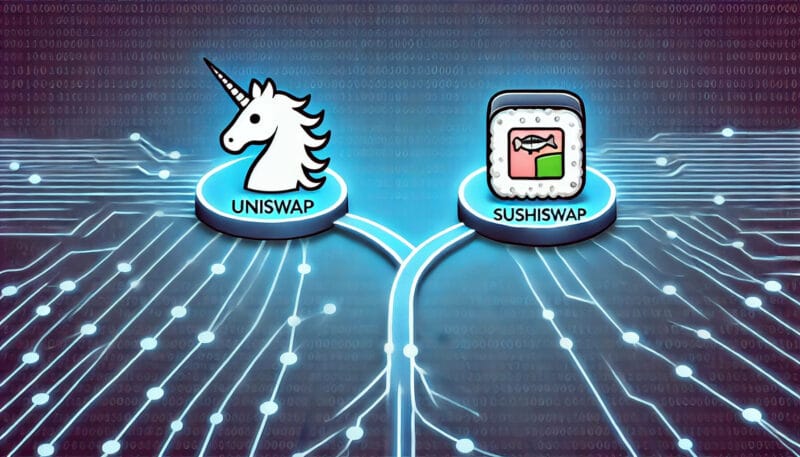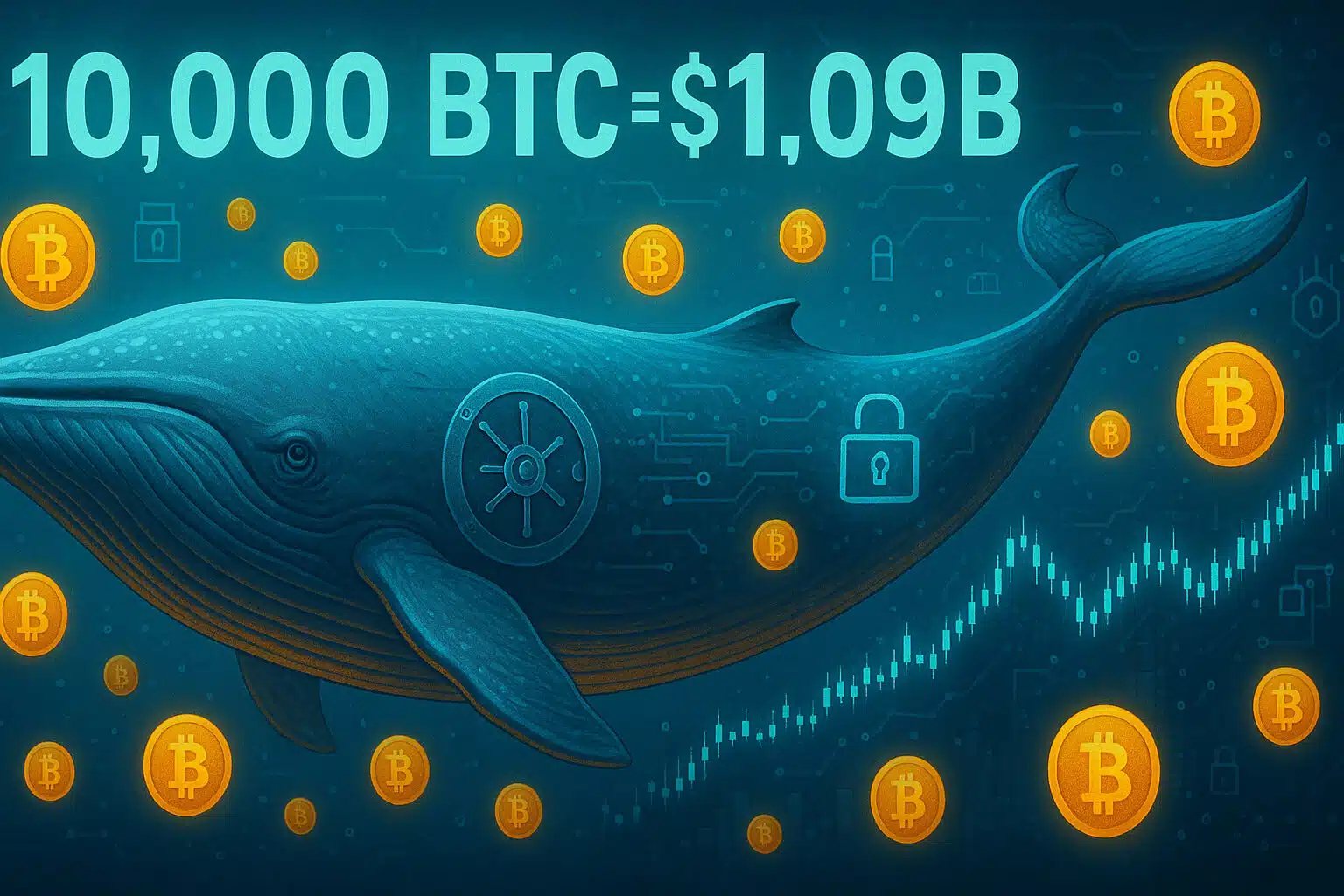1. Introduction: The Rise of Decentralized Finance (DeFi)
Decentralized Finance (DeFi) has transformed the financial landscape, enabling users to trade, lend, and borrow digital assets without intermediaries. Central to this revolution are decentralized exchanges (DEXs) like Uniswap and SushiSwap. Both platforms allow users to trade cryptocurrencies directly from their wallets, relying on liquidity pools rather than traditional order books. Although Uniswap and SushiSwap share many similarities, they also have distinct features and operational differences that set them apart.
Why Compare Uniswap and SushiSwap?
As leading DeFi platforms, Uniswap and SushiSwap are often compared by users who seek to maximize their trading efficiency, liquidity options, and governance participation. Understanding the differences between these platforms is essential for choosing the right DEX for your needs.
2. Overview of Uniswap
Uniswap, launched in November 2018 by Hayden Adams, is one of the most prominent decentralized exchanges. Built on the Ethereum blockchain, Uniswap introduced the concept of an automated market maker (AMM), allowing users to trade cryptocurrencies without relying on traditional order books. Instead, liquidity pools provide the funds for trades, with prices determined by a mathematical formula based on supply and demand.
- Key Features of Uniswap:
- Automated Market Maker (AMM): Uniswap uses an AMM model, where liquidity pools enable direct trading between users.
- Liquidity Pools: Users can contribute to liquidity pools and earn fees proportional to their share of the pool.
- ERC-20 Token Support: Uniswap supports a wide range of ERC-20 tokens, making it a versatile platform for trading various cryptocurrencies.
- User-Friendly Interface: Uniswap’s simple interface makes it accessible to both beginners and experienced traders.
2.1 Uniswap V3
In May 2021, Uniswap launched its V3 upgrade, introducing several new features that significantly improved the platform’s efficiency and flexibility.
- Concentrated Liquidity: Allows liquidity providers to concentrate their capital within specific price ranges, increasing capital efficiency.
- Multiple Fee Tiers: Liquidity providers can choose from different fee tiers based on their risk appetite and market conditions.
- Improved Oracles: Enhanced price oracles ensure more accurate pricing and reduce the risk of manipulation.
3. Overview of SushiSwap
SushiSwap, a decentralized exchange forked from Uniswap, launched in August 2020 by an anonymous developer known as “Chef Nomi.” While it began as a direct copy of Uniswap, SushiSwap quickly differentiated itself by adding new features and developing its own ecosystem. SushiSwap is also built on the Ethereum blockchain and uses the AMM model, but it places a greater emphasis on community governance and rewarding users with its native token, SUSHI.
- Key Features of SushiSwap:
- Yield Farming: SushiSwap offers yield farming opportunities, allowing users to earn SUSHI tokens by staking their assets in liquidity pools.
- SUSHI Rewards: Liquidity providers and stakers receive SUSHI tokens as rewards, which can be used for governance or traded on the platform.
- Governance: SUSHI token holders have the power to vote on protocol changes and developments, giving the community significant control over the platform’s future.
- Additional Features: SushiSwap has expanded its offerings to include lending, borrowing, and staking, making it more than just a DEX.
3.1 SushiSwap’s Unique Ecosystem
SushiSwap has built an extensive ecosystem that goes beyond simple token swapping. Some of the key components include:
- BentoBox: A vault that holds user funds and earns yield from various DeFi strategies.
- Kashi: A lending and margin trading platform built on top of BentoBox, allowing users to earn interest on their assets or borrow funds.
- MISO (Minimal Initial SushiSwap Offering): A platform for launching new tokens and fundraising through initial DEX offerings (IDOs).
4. Key Differences Between Uniswap and SushiSwap
While Uniswap and SushiSwap share the same AMM model and support similar trading functionalities, they differ in several key areas, including governance, rewards, and community involvement.
4.1 Governance and Community
- Uniswap:
- Uniswap’s governance is controlled by UNI token holders, who can vote on protocol changes, upgrades, and fund allocation. However, governance is somewhat limited compared to SushiSwap, with a more structured approach.
- SushiSwap:
- SushiSwap’s governance is highly community-driven, with SUSHI token holders playing a central role in decision-making. The platform regularly holds community discussions and votes, allowing users to influence the platform’s direction.
4.2 Rewards and Incentives
- Uniswap:
- Liquidity providers on Uniswap earn fees from trades made within their pools. However, Uniswap does not offer additional rewards in the form of native tokens (e.g., UNI) for providing liquidity.
- SushiSwap:
- In addition to earning fees from trades, SushiSwap liquidity providers receive SUSHI tokens as rewards. These tokens can be staked to earn additional rewards, traded, or used in governance.
4.3 Ecosystem and Features
- Uniswap:
- Uniswap remains focused primarily on its role as a decentralized exchange. While it has introduced features like concentrated liquidity and multiple fee tiers, it doesn’t offer the broader range of DeFi services that SushiSwap does.
- SushiSwap:
- SushiSwap has evolved into a comprehensive DeFi platform, offering a wide range of services beyond token swapping, including lending, borrowing, staking, and IDOs. Its ecosystem is designed to provide users with multiple ways to earn and participate in DeFi.
5. Liquidity and Market Presence
Both Uniswap and SushiSwap are major players in the DeFi space, but they have different levels of market presence and liquidity.
- Uniswap:
- Uniswap consistently ranks as one of the top DEXs by trading volume and liquidity. Its large user base and wide range of supported tokens make it a go-to platform for many traders.
- SushiSwap:
- While SushiSwap also enjoys significant liquidity, it typically ranks below Uniswap in terms of trading volume. However, its unique features and community-driven approach have earned it a loyal user base.
6. Which Platform Should You Choose?
The choice between Uniswap and SushiSwap ultimately depends on your specific needs and preferences as a DeFi user.
- Choose Uniswap if:
- You prioritize a simple, user-friendly interface with a focus on trading a wide variety of ERC-20 tokens.
- You are looking for a platform with high liquidity and a proven track record.
- Choose SushiSwap if:
- You want to participate in a broader DeFi ecosystem that includes yield farming, lending, borrowing, and staking.
- You value community governance and want to earn rewards in the form of SUSHI tokens.
Conclusion: Uniswap and SushiSwap in the DeFi Landscape
Uniswap and SushiSwap are two of the most prominent DeFi platforms, each offering unique benefits to users. While Uniswap excels in simplicity, liquidity, and trading, SushiSwap stands out with its community-driven governance, reward incentives, and comprehensive DeFi ecosystem. Understanding the differences between these platforms will help you make an informed decision based on your goals in the DeFi space.
For more insights and detailed comparisons of DeFi platforms, explore our DeFi Guides section.
Stay Updated
For the latest updates on DeFi platforms and crypto trading, follow us on:
Stay informed with the latest strategies and insights in the world of cryptocurrency at FreeCoins24.io.
Special Offer
Ready to dive into DeFi? Sign up on Bybit today and take advantage of up to $30,000 in deposit bonuses. Start trading on leading DeFi platforms with confidence.


















